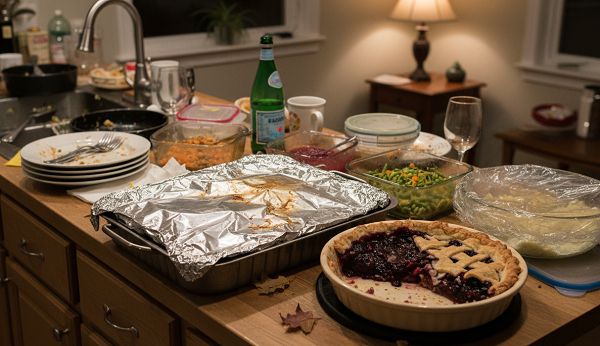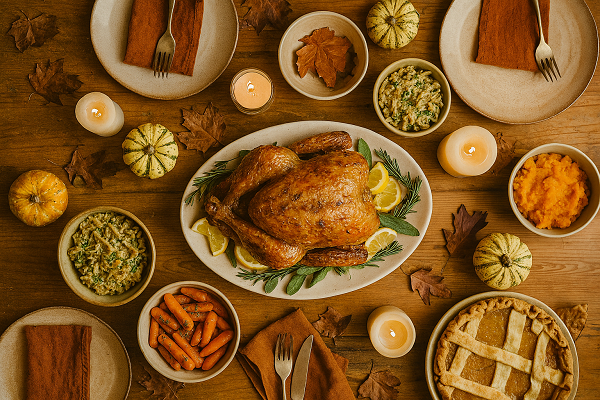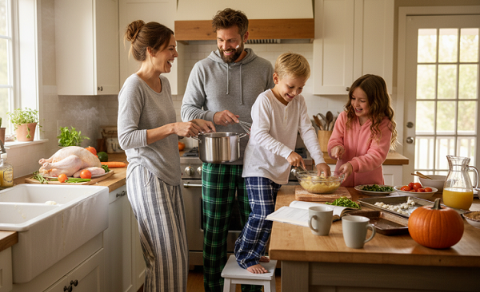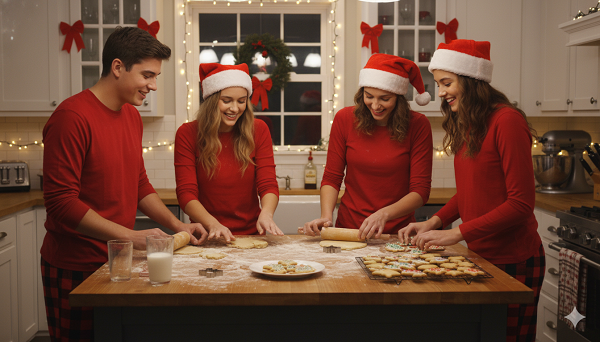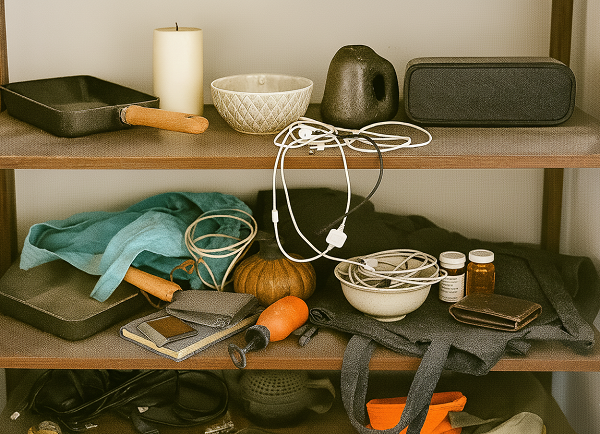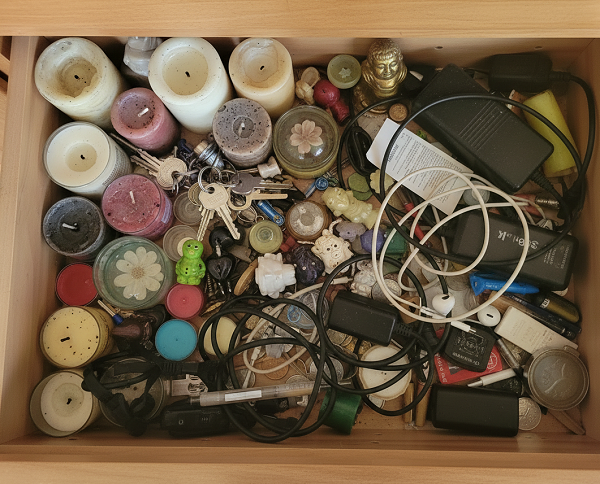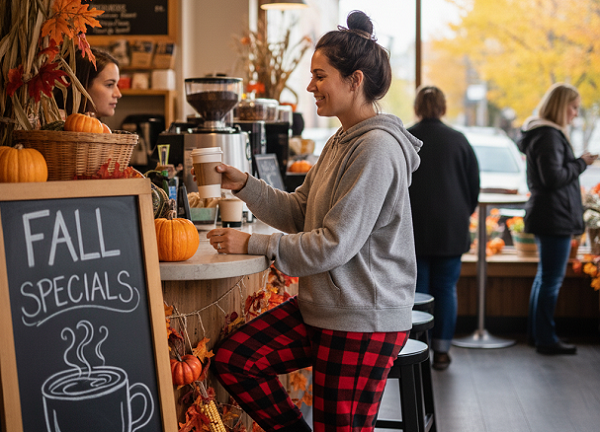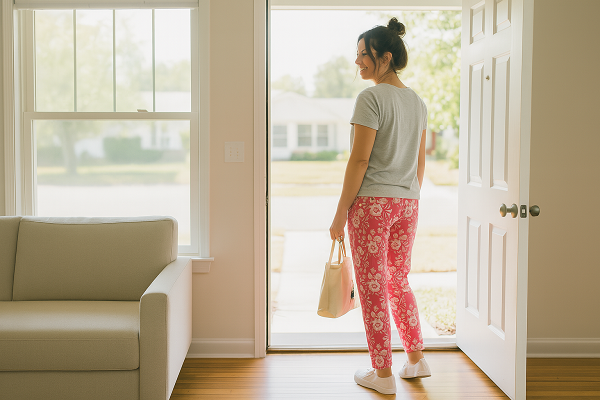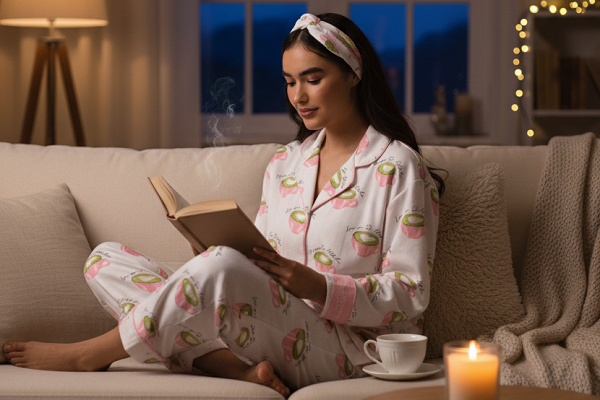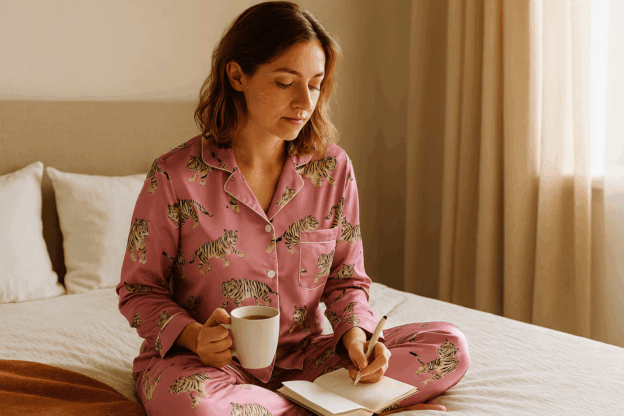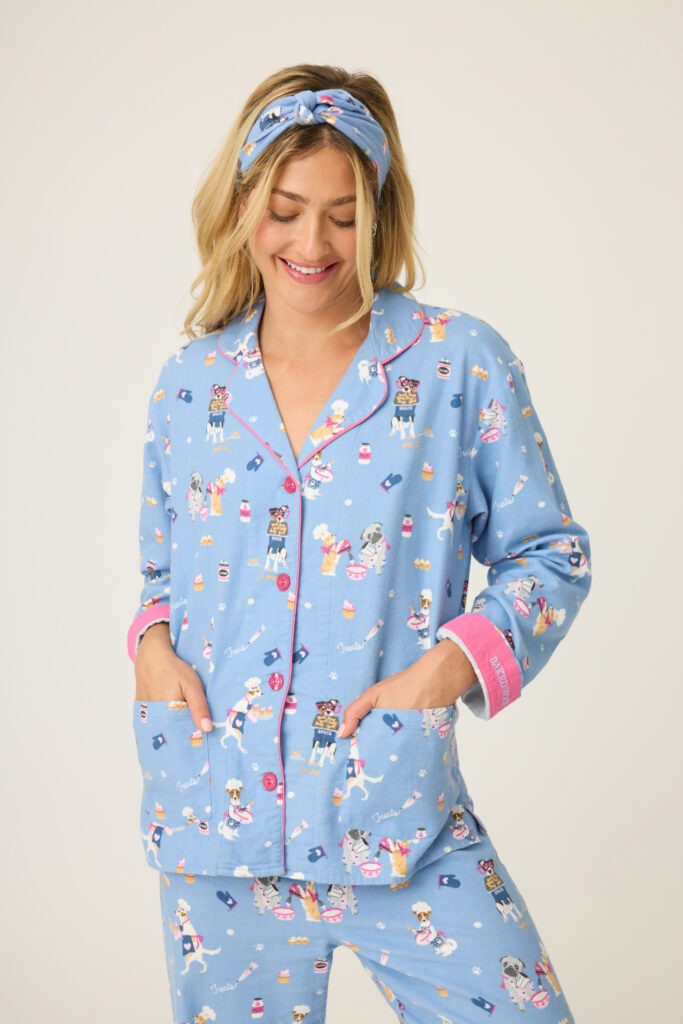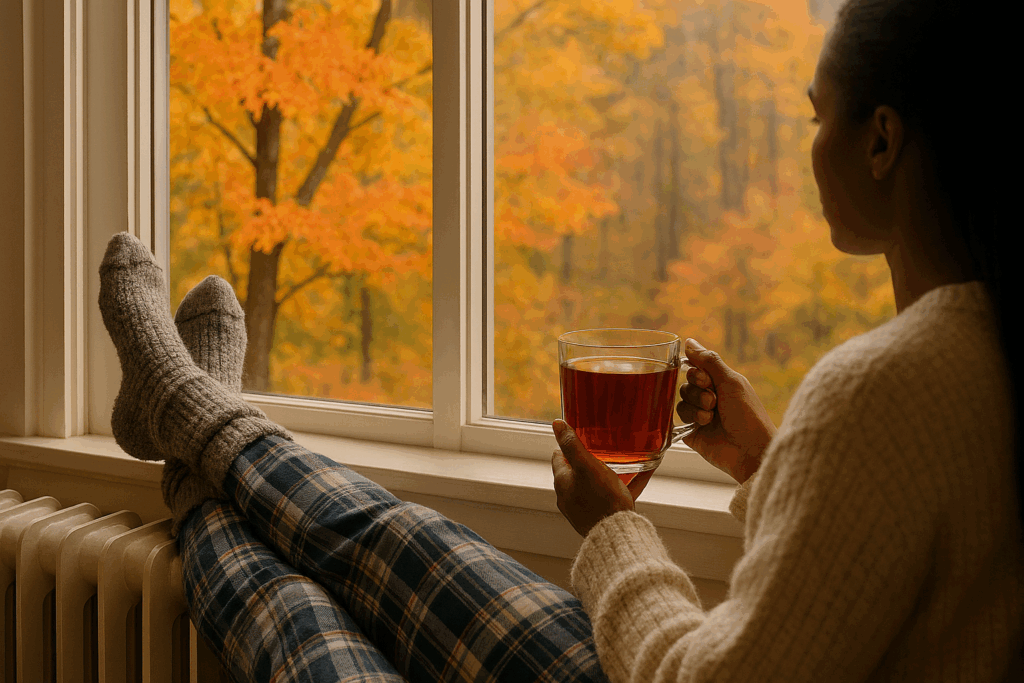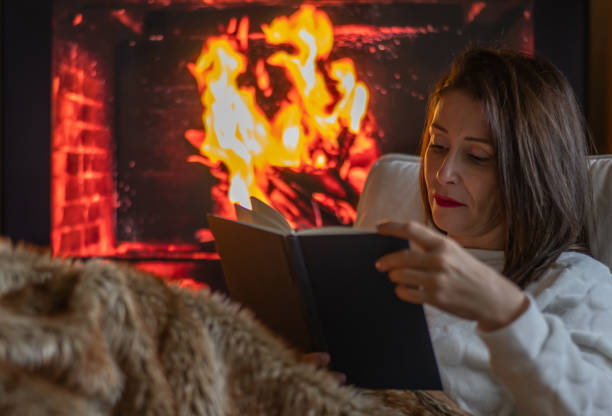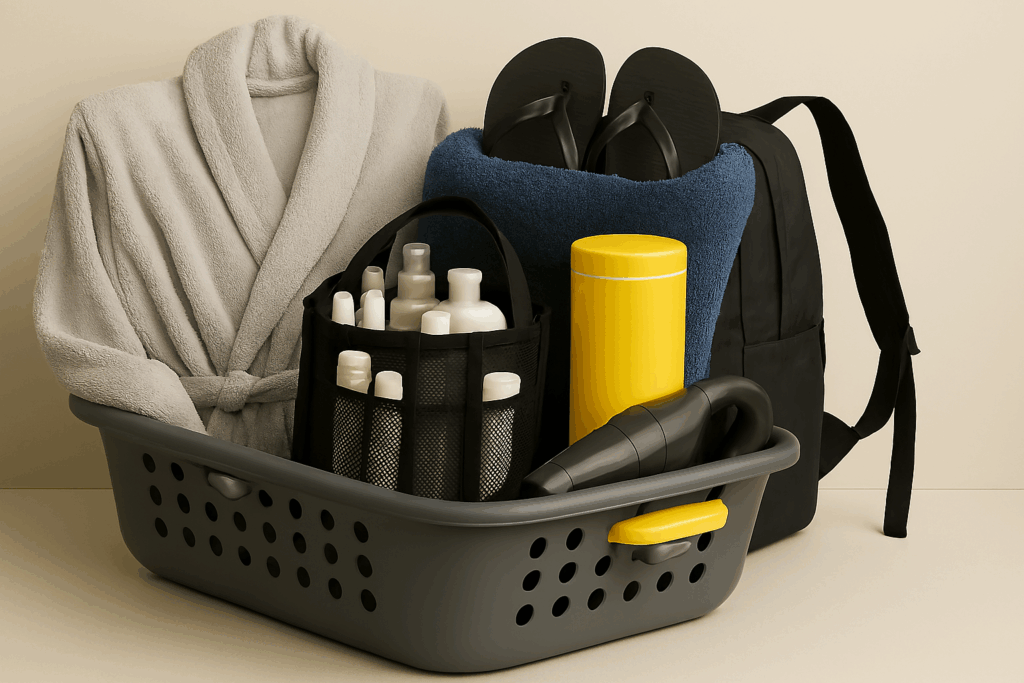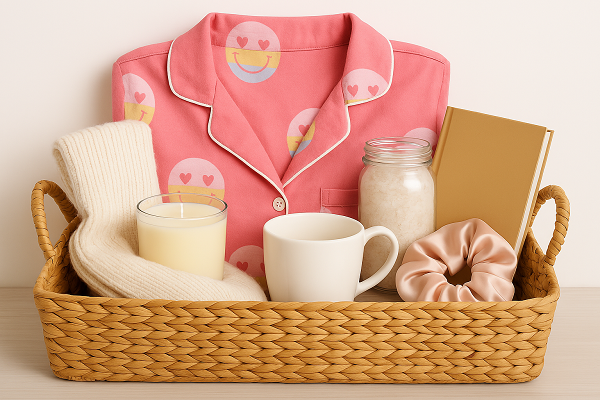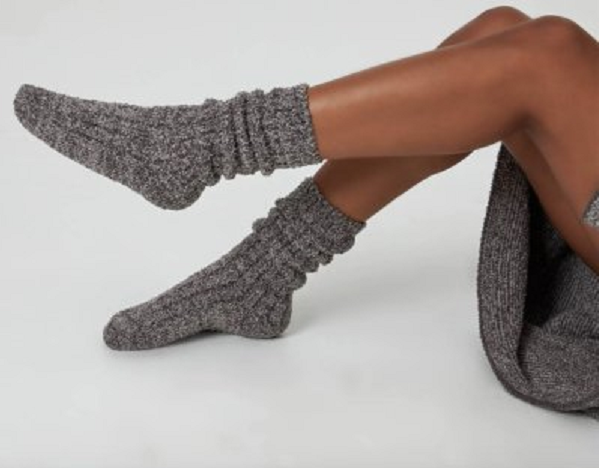December has a way of showing us how creative survival can be. Out in nature, animals are pulling off incredible tricks to make it through the coldest months. Birds head south in massive migrations, flying thousands of miles to chase the sun. Humans make our own little migrations too. We move from the couch to the fridge, from the living room to the tree where ornaments are waiting. Pajamas are our travel gear for the season, soft and forgiving, perfect for short journeys that still feel like rituals.
Take hibernation. Bears curl up in dens and snooze through the cold. Hedgehogs tuck themselves away until spring. We do not hibernate, but December definitely slows us down. Pajamas become our cocoon, wrapping us in softness that says we have earned this pause. Whether it is a lazy Sunday morning or a quiet evening after a holiday party, pajamas are the signal that it is time to recharge.

Then there is camouflage. Arctic foxes and snowshoe hares swap their coats for winter whites so they can blend into snowy landscapes. Humans do not need to hide, but we do adapt our look. Pajamas are our version of seasonal style. Some nights call for bold prints, others for muted tones, and sometimes you just want the festive pair that makes you grin. It is not about survival; it is about expression. Pajamas let us show a little personality while staying warm.
The long nights of December bring another layer of connection between humans and animals. Owls and raccoons thrive in the dark, hunting and exploring while the rest of the world sleeps. We find our own kind of magic after dark. Midnight becomes the hour for wrapping gifts, telling stories, or just sitting in the glow of the tree lights. Pajamas are the uniform of these late-night rituals. They are not just clothes, they are the signal that the day has shifted into something quieter and more personal.
Even the smallest creatures remind us of December’s lessons. Squirrels stash food to prepare for leaner days. We stash memories instead. We collect photographs, notes, and ornaments that carry meaning. Pajamas are part of that backdrop too, the outfit we are wearing when we are cataloging the year or dreaming about what comes next. They are woven into the moments we will look back on, even if we do not realize it at the time.
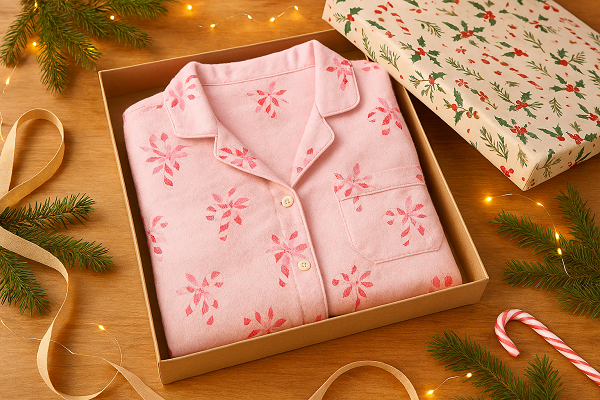
Animals show us that December is about resilience and adaptation. Each species finds its own way to endure. Humans do the same, just with softer tools. Pajamas are more than fabric. They are our emblem of comfort, creativity, and survival in the season of long nights. They let us move through December with ease, reminding us that adaptation can be cozy, expressive, and even a little fun. And if you are looking for a gift that captures all of that, pajamas are the perfect way to wrap comfort and joy into one simple package.



